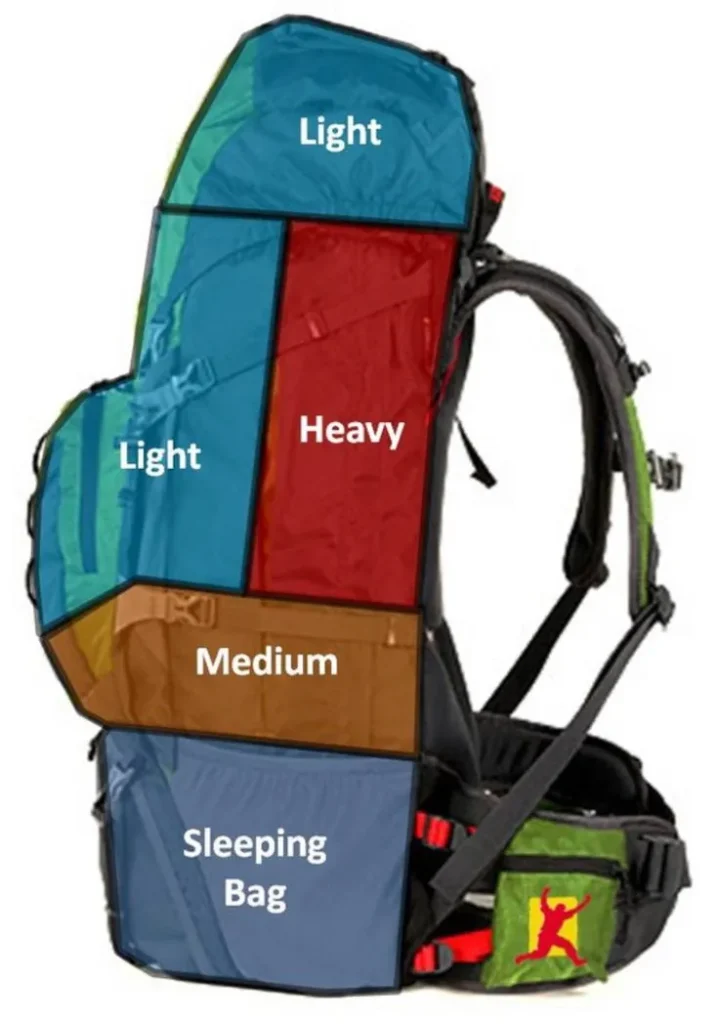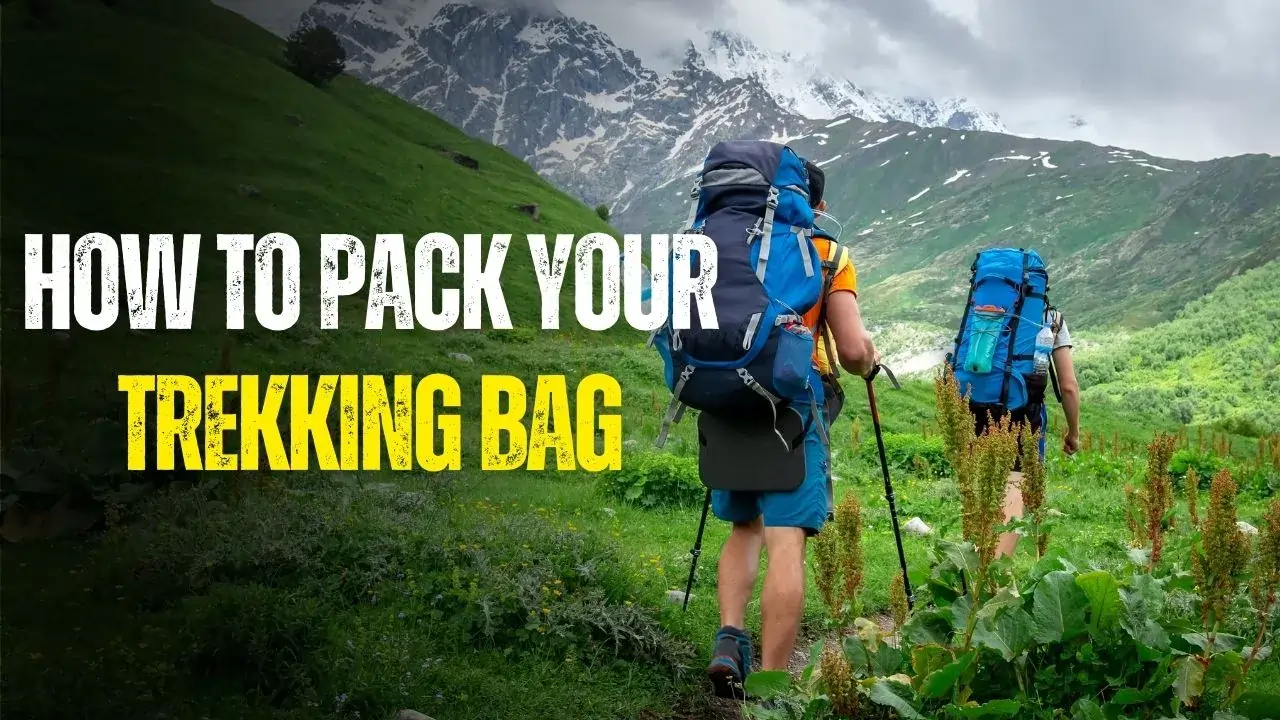Packing a trekking bag for a trek will make or break your trip and it’s one of the most important parts of trekking. “After doing many treks and expeditions, I have found out that if you pack your backpack perfectly, it totally changes the trekking experience,” says Soby Negi, Co-founder of Himalayan Dream Treks.
If your trek bag is properly packed, it gives you comfort and helps in the accessibility of items that you need on a trek.
For a 4 to 7-day trek, a 50 to 80-litre backpack is suitable, and keep in mind that your backpack should not be more than 30% of your body weight.
In this blog, I will tell you all the tips and tricks you must follow to pack your trekking bag.
The zones of the trekking bag
We have divided the trek bag on the basis of zones, which are the Top zone, Core zone, and Bottom zone.

1) Top Zone
In the top zone, we must include essential items:
- ID proof
- Snacks
- First aid kit
- Rain gear (Jackets, Rain Cover)
- Bathroom kit.
- Plastic bag for packing out toilet paper.
2) Core Zone /Middle Zone
In the middle zone, pack those items that are the heaviest and most sturdy.
- Stove and fuel
- Food/Bear Canisters
- Loose clothing stuffed
3) Bottom Zone
At the bottom zone, pack lightweight items so they don’t weigh on your shoulder and you can walk easily.
- Sleeping Bag
- Sleeping Pad/Pillow
What should be in side pockets and hip belt pockets?
a) Side Pockets
- Trekking Pole
- Tent Poles
- Water Bottles
b) Hip Belt Pockets
- Lip Balm
- Phone or other electronic stuff
- You can include handy gear in this pocket

ABCDE Rule in Backpacking
You might need clarification on this stuff. Now Breakdown this
A- Accessibility
B- Balance
C- Compression/Compactness
D- Dry
E- Everything Inside
A- Accessibility
The main theme behind accessibility is to pack those items that are needed frequently and can be accessed instantly.
Now, I have divided this according to need at the time
During the Day, you can include:
- Rain Coat
- Sun Cap
- Sunscream
- Medical Kit
- Gloves
These items should be in the main compartment of the backpack. Pack bodywarmers and sleeping gear at the bottom of the backpack.
B- Balance
If you pack your bag with the wrong method, it goes against the center of gravity, leading to unbalance of the backpack. Hence to maintain the balance, you need to make extra efforts which will affect your trek experience.
Below are the tips by which you can easily balance your packing:
- At the bottom of your backpack, put fluffy items that are lightweight. For example, sleeping bags, warm jackets, etc.
- Putting lightweight items at the bottom comforts your lower back and helps remove weight from your shoulder.
- Heavier items should be placed on the middle portion of the pack. This means it should be closer to the spine. By doing this, the center of gravity goes in the right direction.
- Lighter items should be placed on top of the backpack.
- Putting water bottles in the external pockets, one on the right side and the other on the left side, creates a balance in the backpack.

C – Compression/Compactness
You can achieve compactness by reducing the surface area of the items you want.
- Pants, shirts, or t-shirts should be rolled by the ranger roll method.
- Bulky items such as camp mugs, food/canisters, and other heavy items should be transferred into zip lock bags, and by doing this, they cover less space.
- To avoid the empty spaces in the backpack, put shocks and other clothes into these spaces.
D-Dry
Put the dry and wet items separately. That’s why adding an extra polybag for wet items is recommended.
E- Everything Inside
Do not leave any items tangling and hanging from the backpack; it totally unbalances the structure of the backpack. Putting everything inside the backpack is the right way.
In the end, packing the backpack for trekking requires careful planning and organization. By following the ABCDE rule, you can ensure a safe and enjoyable trekking experience. Various brands like Decathlon, Trawoc, and Wildcraft offer decent trekking bags in India that you can consider.
Next Read: A Guide to Hiking Vs Trekking and Why do people trek? Benefits of trekking

Leave a Comment